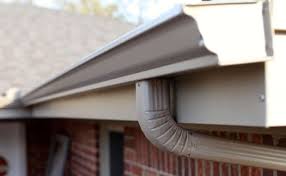A Typical Albany NY Home Inspection - Moisture & Water Edition
- Adam Clark
- Feb 6, 2018
- 8 min read
* The following article explains what a Home Inspector in upstate New York Inspects from the exterior

So you put an offer in on the home of your dreams or an investment property and it was accepted....
CONGRATS!!
Well as you may know your attorney has most likely started communicating with the sellers attorney, you have gave your agent a good faith deposit and now your real estate agent is advising that you need a home inspection within a couple weeks. Your local real estate agent may recommend a few local home inspectors or you may turn to google to:
1.) Find out what a home inspection is all about and/or
2.) Turn to google and start searching for a home inspector in the Albany NY area.
Both are very important. A buyer should be well aware of what a home inspection consists of so he or she can make sure the home inspector they hire covers the entire home during the home inspection.
Although your home inspector should make you aware of issues within your potentially new home - your Home Inspector should not make you worry and stress about EVERY SINGLE defect in your home. No home is perfect and ALL homes have a list of items that need to be addressed! An experienced home inspector should be able to explain his or her observation in a objective way that makes you aware of the issue and addresses real magnitude of the problem at hand.
In this edition of "A Typical Albany NY Home Inspection" we will go over the exterior components of the home.
The roof is one of the first lines of defense in protecting the inside of your home. Roofs come in all shapes, sizes and materials. The most common roof types that are inspected by a home inspector in Albany NY consist of shingles. Shingles protect the roof by allowing the water to run off to protect the underlayment, attic and ultimately your home. When water penetrates the shingles and makes its way into the attic this may lead to mold problems down the road. The home inspector will check to see if the roof is currently leaking (current wet stains that are moist), if it has ever leaked in the past (evidence of previous dry stains) and comment on the condition of the roof as a whole. Different roofing materials have different life spans. For example throughout Albany, Schenectady, Troy you will find some roofs are slate. When Slate is replaced the new material is most likely architectural shingles.
Another common roof throughout Albany, Schenectady and Troy is the flat rubber roofs. Rubber roofs are have a membrane to protect the home from rain or snow. The flat roof is usually pitched toward a drain and the drain carries the water down from the roof and away from the home. As you may already know the flat roofs are most common on row house and brown stones throughout Albany, Schenectady and Troy. Other roofing materials consist of metal, wood shingles and shakes, composite, corrugated metal and tile.

As you can see from the picture above" the roof " just isn't about the covering. YOU HAVE PENETRATIONS! The most common penetrations are your chimney, venting pipes, attic ventilation and skylights. Where ever you have penetrations in a roof those penetrations are susceptible to leaks. Your local home inspector should be inspecting ALL visible penetrations going through the roof and looking for active leaks. If a home inspector finds a old water stain that are dry and the roof is said to be "new" chances are the leak may be old.
Its up to your local home inspector during the home inspection to identify the roofing material, check for leaks, identify maintenance issues and overall give you a general idea of the condition.
Gutters
Where does the rain or snow melt travel after it hits the roof?
THE GUTTERS!
Gutters are used to direct water AWAY from the house. A home without gutters is more susceptible to foundation issues. When water runs off the roof it wants to travel to all open areas, cracks, seams etc. Water can makes its way into small foundation cracks. What then freezes, expands and eventually damages your foundation from the freezing and thawing processes.
Freezing and thawing causes the crack in your foundation to get bigger and BIGGER. At some point if the water is not redirected else where your foundation will deteriorate quicker than a home that redirects water away from the foundation. This processes may take years and years possibly DECADES! depending on several conditions. Water penetration into the foundation can cause small cosmetic issues that may lead to structural issues down the road. Gutters also come in all shapes, sizes and materials but the main function remains the same.
Your local home inspector during the home inspection should advise on the condition of the gutters, maintenance issues and if the gutters are adequately pushing water away from the home.
Ventilation

Ventilation is very important. Although ventilation is needed in your bathroom and in some cases your basement for this article I will stick to the roof/attic ventilation. The attic is the unfinished room right below your roof and is exposed to the heat coming up from the living area.
For the most part the heat and moisture needs to move throughout the attic and make its way outside by mechanical or non mechanical means. Additionally heat from the sun can create a hot and moist atmosphere in the attic. Keeping the air circulating will help prevent mold issues, ice build up on the roof eaves which can lead to the roof prematurely leaking and clogging or damaging the gutter through the formation of ice.
Your local home inspector can identify ventilation issues during a home inspection and advise accordingly. Not all homes have mechanical vents and ventilate the moist hot air efficiently through vents, ridge vents and soffits. A big mistake some home owners do is insulate the entire attic trapping in all of the hot air leading to the issues underlined above.
Exterior Covering
Working our way down the home from top to bottom we now have the exterior covering. In this case I will stick to the most common. Compsite and vinyl siding is the most common in the Albany NY area. Older homes will have aluminum, clapboard, real or artificial brick, stucco and many more. The exterior covering acts the same way the roof operates by keeping the outside elements from entering the inside of the home and wetting the wood framing members. Remember most wood and water/moisture do not go together well.
Over time wet wood tends to rot, mold, expand/contract and eventually deteriorate. After wood deteriorates the structural integrity of that wood component is compromised. The idea is to maintain the exterior siding and keep its installation weather tight. Weather tight is a term used meaning no water can enter behind the installation of the exterior covering material. All exterior coverings for example a roof and siding should be weather tight.


During the home inspection your local home inspector should be looking for water entry points, damaged exterior covering or water entry points in a brick exterior covering, observe and report. As a new home owner you need to know what preventive measure need to be taken to mitigate a small issue that may turn into big head ache.
Foundation
The foundation is the component of your home that the ENTIRE weight of the house rests on. Foundations come in block, brick, poured foundations, slate and brick mix in older homes and more. The foundation is an entry point for water. Remember the idea is to keep water AWAY from your home. Humans need water to survive NOT your home.
For the most part a lot of cracks I see in foundations are "surface cracks". Surface cracks are almost like chipping paint. It looks ugly but no serious damage is done. As discussed in the gutters section every crack starts off as just that A SMALL crack. Small cracks in the foundation will get larger and larger. Remember gutters push the water AWAY from the house. But what if water is still entering your foundation? Read on.
Example of Surface Cracks

The picture to the left is an example of a surface crack that can occur on the inside or outside of the foundation. Surface cracks are not a major concern but should be remedied to keep water out and the crack from expanding.
Another preventive measure is grading your landscaping around your house sloping AWAY from the home. This will redirect the water away from the house. There are other solutions such as perimeter drainage system which collects the water around the home and redirects the water AWAY. Your local contractor should be able to assist you with a remedy and estimate if needed.
A 3rd preventive measure is resurfacing your foundation wall and parging it the correct way. This will seal up the exterior but remember just parging the exterior of the foundaton is a bandaid on the problem. Redirecting water is the away from the home using the methods described above or other methods recommended by a qualified contractor to divert water away.
Examples of Structural Cracks

The picture to the right shows clear example of structural cracks. Anything over a 1/2" and shows evidence of foundation displacement may be a concern. Structural cracks are a major issue. A local engineer can advise on the magnitude of the problem and method of correction. Your local home inspector should advise in his/her inspection report.
The basement is usually the least attractive "room" in the home. Most basements have small cracks, flaking, minor leaks etc. Most homes that home inspectors inspect in the Albany NY area fall between the ages of 50-110 years old. Its not uncommon to see minor settlement in some of these homes and have multiple interior cracks.
If the home sits on a slab a basement will not be present. It is still important to keep water away from the house. Homes that sit on foundation are usually 12-18 inches off the ground. A home that sits on a slab usually will have the siding almost touching the grade (ground).

The picture above is an example of wood rot that has occured due to the siding and plywood touching the dirt! The sheathing material behind the siding wicks up the water from the dirt and causes wood rot! Now this doesn't mean all homes on slabs are having this issue. But it is a good idea to be aware so you can keep your gutters clean and grade the soil away from you home as well as keeping the dirt AWAY from touching your siding.
Your local home inspector should be able to observe and report on water penetrating issues in the foundation wall. Your home inspector will also be able to determine if the cracks in the foundation are minor or MAJOR. During the home inspection if the home inspector identifies a foundation crack as a major problem he should recommend a licensed engineer or architect to evaluate the issue.
Conclusion
Thanks for reading my blog. I hope this gave you some insight on why it is important to keep moisture and water away from your home. I touched on the major exterior components of the home and systems that interact with each other to keep water and moisture out of the home.
Please feel free to share!
Any Questions or Comments?

The Author Adam Clark is the owner and operator of Shield Guard Home Inspections. Adam Clark is a Home Inspector located in Albany NY that has performed over 6000 Inspections.
Feel Free To Call Us with ANY Questions!
(518) 720-7152







































Comments